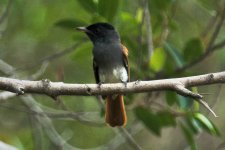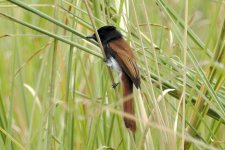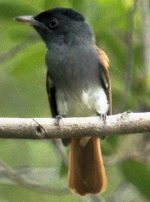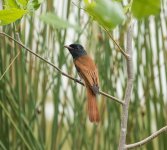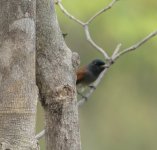Thanks for your input, John.
First of all, I 'm not sure anyone other than a small handful of birders is at ease with these. They can be really tough, especially in 1st-winter plumage. The contrast between the throat and breast needed to separate Amur from Blyth's can be hard to see - sometimes it's apparent in one image but not in another.
Your suggestion of Japanese is an intriguing one. Immature/female Japanese does seem to show a contrast between the black crown and the rest of the head, plus the aforementioned black primary coverts. However, the colour of the upperparts does seem to be a deeper, richer brown, as in this example:
https://www.flickr.com/photos/53435640@N05/31100428557
This bird has a blue eyering - when does this develop, I wonder?
I learned about the primary coverts feature from this post from Dave Gandy's excellent blog, now sadly discontinued. This bird was originally identified as Amur. It does seem to be a slightly lighter shade of brown but still not as light as the OP bird. It doesn't have a blue eyering and there's a lot of yellow on the bill-base, so it must be a younger bird than the first example.
http://bangkokcitybirding.blogspot.com/2016/05/hell-in-paradise.html
Another feature of Japanese people mention is that there's often an upside-down-U-shaped incursion from the belly into the breast, although this is not particularly apparent in Dave's bird and certainly not in the OP bird.
So to conclude, I don't think the OP bird is Japanese but I'm not 100% sure. Grahame, can you take a look?




